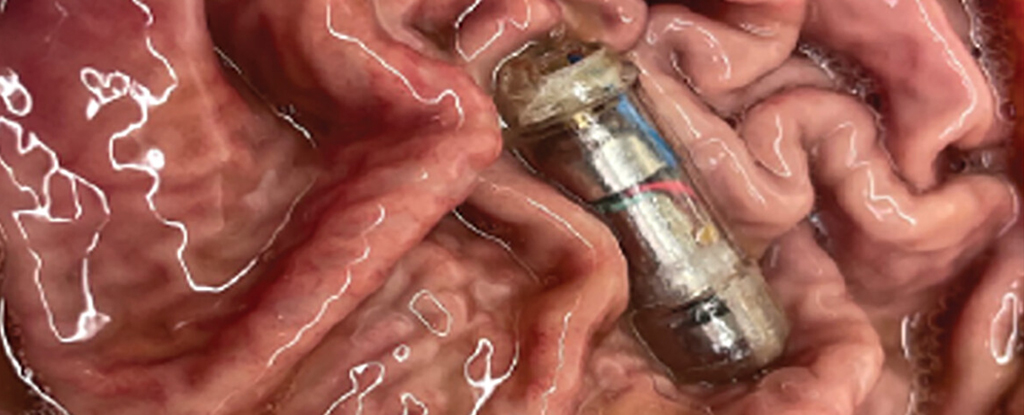The challenge of losing excess weight is often compounded by a desire to feel full, driving researchers to explore ever-more innovative ways to trick our stomach into thinking it’s packed to the gills with a hearty meal.
Engineers from MIT have taken a new approach to the problem, developing a vibrating pill that tickles the tum from within, provoking specialized stretch-sensors in the stomach wall into telling the brain there’s no more room.
“For somebody who wants to lose weight or control their appetite, it could be taken before each meal,” says former MIT student Shriya Srinivasan, who is now a bioengineer at Harvard University.
“This could be really interesting in that it would provide an option that could minimize the side effects that we see with the other pharmacological treatments out there.”
Approximately 2 out of every 5 adult Americans are now considered obese, while nearly a third are overweight. While the relationship between body mass and health is a complex one, the challenges associated with carrying significant amounts of stored fat can often lead to a litany of concerning conditions.
One consequence of weight gain is an impaired ability to feel satisfied with eating smaller quantities of food, especially fats and sugars. Controlling calorie intake through dieting is a struggle when the brain is wired to expect more.
There are, of course, a number of ways we can hack our body’s digestion circuitry to shut down this hunger response, ranging from simply filling our stomach with materials that are low in calories, such as water, to drastic interventions like bariatric surgery.
Others target the brain’s chemistry, using pharmaceuticals to extinguish the empty feeling below.
As is often the case with all things medical, there are costs and benefits to each. Medications can have side effects, surgery is highly invasive, and filling up on cabbage soup simply isn’t everybody’s cup of tea.
“For a lot of populations, some of the more effective therapies for obesity are very costly. At scale, our device could be manufactured at a pretty cost-effective price point,” says Srinivasan.
That device is already fairly simple. Referred to as a Vibrating Ingestible BioElectronic Stimulator (VIBES) pill, it consists of a 30.65 millimeter (just over 1 inch) long capsule coated in a gelatinous membrane that dissolves within minutes of being swallowed.
Inside is a spring-loaded mechanism that switches on a vibrating motor once the capsule is safely inside the stomach, buzzing away at frequencies tuned to stimulate sensory nerves in the stomach wall that typically respond to the stretching of tissues.
Tested on 10 strapping young Yorkshire pigs, the capsules were monitored for movement, safety, duration, and ultimately effectiveness at reducing food intake. Each animal swallowed the VIBE pill 20 minutes before eating, with the device then buzzing away in their stomach for about half an hour.
Not only was the pill associated with a rise in hormones that indicate the brain is no longer in hunger mode, the pigs with the shimmying pill in their gut responded by eating 40 percent less than their ravenous pals.
This also translated to an effective means of weight loss, with the test pigs gaining weight more slowly during the experimental period. With no signs of damage being done to their insides, the pigs passed the capsules a few days later none-the-wiser to the VIBE’s passage.
The researchers are now looking for ways to increase the device’s operating time and scale its design for clinical trials in humans in hopes it could one day be the new buzz in losing weight.
The research was published in Science Advances.





